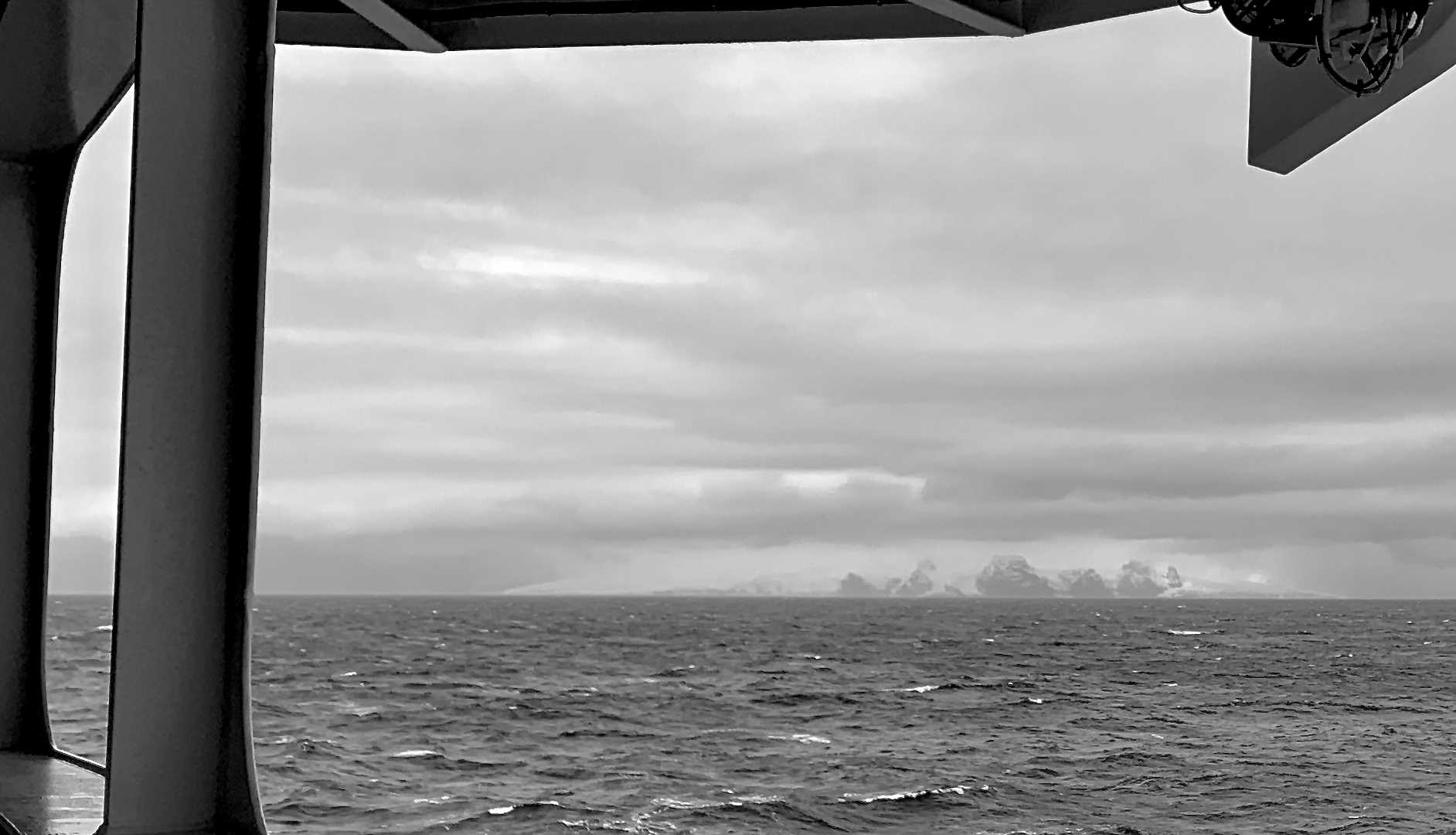We explored the middle section of the South Sandwich Island arc today. We have traveled more than one fifth of the way around the globe, from 90 degrees 44 minutes West, near Peter I Island. Hovering between 72- and 58-degrees south latitude, the great circle is significantly smaller than it is at the equator. Eighteen days of voyaging passed so quickly, but it also seems, well, like we started on the other side of the world! Throughout the day, we passed through fog, clouds, sunshine and snow…everything you might expect from these stark volcanic masses rising out of the abyssal sea, one of the most remote island chains in the seven oceans.
- Daily Expedition Reports
- 16 Jan 2022
Saunders & Candlemas Islands, South Sandwich Islands, 1/16/2022, National Geographic Endurance
- Aboard the National Geographic Endurance
- Antarctica
Rob Edwards, Naturalist
Growing up in the Appalachian foothills of the Garden State, Rob instinctively knew it made a lot more sense to head over the hill into the fields, forests, lakes, and streams behind his house, rather than down the road to the shopping mall in front ...
Read MoreShare Report
Related Reports
2/4/2023
Read
National Geographic Endurance
At Sea
After three wonderful days in New Zealand’s Subantarctic Islands, we are making our way south to Macquarie Island, within the Tasmin State of Australia. Macquarie is a UNESCO World Heritage site, namely for its fascinating geology. The intact seafloor was pushed above sea level by mid-oceanic convergence to form the island. The same ridge that produced Macquarie Island also creates ocean currents that generate biodiverse hotspots, and we were greeted with evidence of just that this morning. During breakfast, we spotted several whale blows in all directions around National Geographic Endurance . We sighted two southern right whales, one of the rarer cetaceans in the Southern Ocean, and numerous sei whales. We were also escorted by a large pod of long-finned pilot whales. The large males and pairs of mothers and calves were just off the bow. They had large, round, shiny heads, white blazes, and beautiful saddles. It was truly a treat to watch them effortlessly move through the water as a unit before disappearing together in one fluid dive. We had two lectures by the photo team. One helped us better understand the phone in our pockets, a.k.a. our smartphone, and the other helped us improve our bird photography. Next up was a lecture on the smell of the ocean by naturalist Conor Ryan. We learned how birds find dense prey aggregations in the vast ocean they call home. The seas were relatively calm, and the fog came and went throughout the day. Albatrosses soared along effortlessly as we moved toward our next destination. The air is getting noticeably cooler. Soon we will lose sight of the vegetation we have been enjoying along with the milder temperatures. We are getting ever closer to the Ross Sea. We are getting closer to Antarctica.
2/3/2023
Read
National Geographic Endurance
Perseverance Harbour and Campbell Island
Although we arrived in thick fog and rain, the weather and visibility gradually improved as the day progressed. We Zodiac-cruised the bays of the inner harbour in the morning, followed by a rewarding hike to a southern royal albatross colony under blue skies in the evening.







